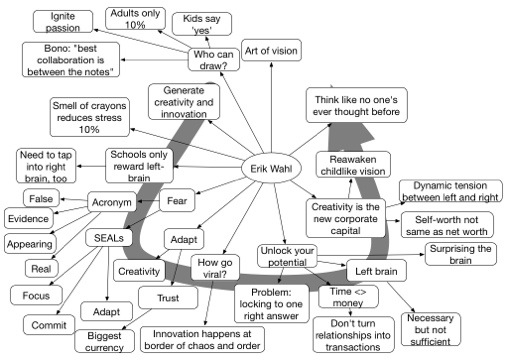Recently, there’s been a lot of talk about informal learning, which ends up sounding like formal learning, and this can be confusing. So I’ve been trying to reconcile these two viewpoints, and this is how I’m seeing it.
There are really two viewpoints: that of the learning and development (L&D) professional, and that of the performer. Each of these sees the world differently, and we need to separate these out.
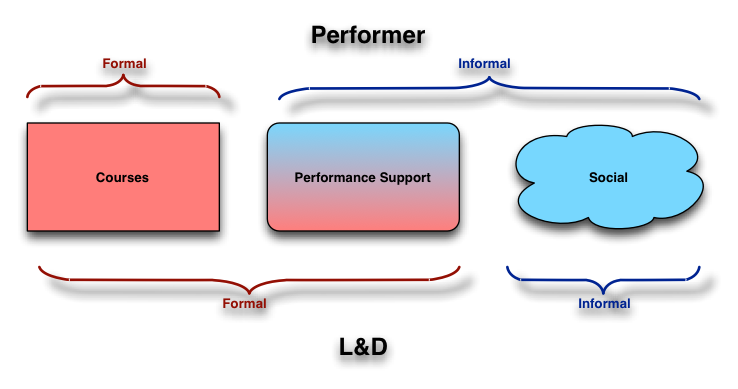 Let’s get formal learning out of the way first. Performers know when they’re on deck for a course. They’re even willing to take courses when they know there’s a significant skill shift they need, or when they’re novices in a new area. If you’ve addressed the emotional side – motivation and anxiety – they can be eager participants. And L&D knows formal learning (all too well), they know how to design and develop courses (or think they do; there’s a lot of bad stuff being produced under the rubric ‘course’ that’s a waste of time and money, but that’s another topic).
Let’s get formal learning out of the way first. Performers know when they’re on deck for a course. They’re even willing to take courses when they know there’s a significant skill shift they need, or when they’re novices in a new area. If you’ve addressed the emotional side – motivation and anxiety – they can be eager participants. And L&D knows formal learning (all too well), they know how to design and develop courses (or think they do; there’s a lot of bad stuff being produced under the rubric ‘course’ that’s a waste of time and money, but that’s another topic).
Now, let’s move on to informal learning, as this is where, to me, we have a conflict.
The performer is focused on the tasks they need to perform. When they’re practitioners in the area, they’re much more likely to want the resources ‘to hand’: job aids, information, wizards, etc. This also includes search engines, portals, and more. Further, they’re likely to want people when that’s relevant: coaching, mentoring, answers that aren’t yet codified, finding new ideas and solutions. The latter, resources and people, are to them informal learning. They’re answers, not courses.
Now, from the perspective of the L&D group, job aids are formal learning. They’re designed, developed, and delivered. They’ve got the ‘secret sauce’ provided by folks who understand how we perceive information, work, learn, and more. So here we have a mismatch. Now, not all L&D groups take ownership of this area, but they could and should. (While I think portals should be too, it’s less likely that the L&D group has a role here, and that too should change.)
Then we move to the social side: communication, collaboration, and more. Here, L&D and the performer are largely in agreement, this is informal learning. However, there’s really another mismatch. L&D tends to think there’s little they can do here, and that’s a mistake. They can do several things: they can make courses about how to use social media better (not everyone knows how to communicate and collaborate well), share best practices, work social media into formal learning to make it easier to facilitate the segue into the workplace. They can also provide performance support for the social media, and be facilitating it’s use. They can unearth good practices in the organization and share them, foster discussion, etc; seed, feed, weed, and breed. (And, yes, L&D interventions there will be formal in the sense that they’re applying rigor, but they’re facilitating emergent behaviors that they don’t own.)
This latter, the use of social media in the organization for work should happen, as that’s where the continual innovation happens. As I say: optimal execution is only the cost of entry; continual innovation is the necessary competitive differentiator. Formal learning helps execution, and so does performance support, but innovation comes from social interaction. And L&D groups shouldn’t leave innovation to chance. They have a role to play.
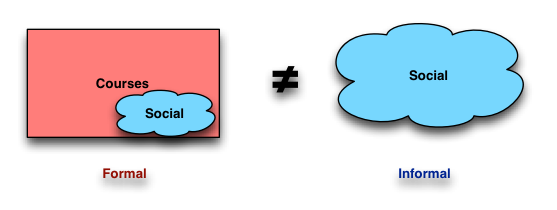 There’s one more confounding factor. Adding social into formal learning is worthwhile, but folks might get confused that doing so is also informal learning, and it’s not. Having requirements for personal reflections via a blog, discussions via forums, and collaborative assignments via wikis, and more, to facilitate learning are all good things, but certainly from the view of the performer it is not informal.
There’s one more confounding factor. Adding social into formal learning is worthwhile, but folks might get confused that doing so is also informal learning, and it’s not. Having requirements for personal reflections via a blog, discussions via forums, and collaborative assignments via wikis, and more, to facilitate learning are all good things, but certainly from the view of the performer it is not informal.
So, when you hear someone talking about informal learning and it sounds like formal learning, realize that they may be missing this final piece, the perspective of the performer. L&D can and should take on informal learning as well, but it’s not helpful if they think that just doing performance support and adding social into formal learning is all that needs to be considered as informal learning.
That’s the way I’m seeing the confusion emerge. Does it make sense to you?
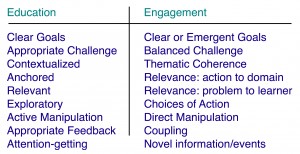

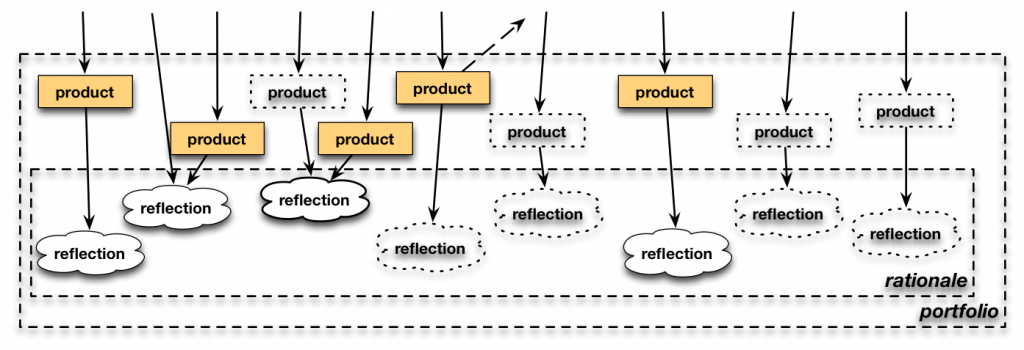




 In a recent
In a recent 